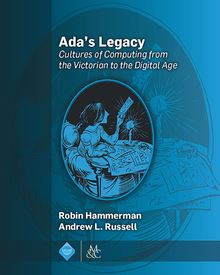-
 Univers
Univers
-
 Ebooks
Ebooks
-
 Livres audio
Livres audio
-
 Presse
Presse
-
 Podcasts
Podcasts
-
 BD
BD
-
 Documents
Documents
-
- Cours
- Révisions
- Ressources pédagogiques
- Sciences de l’éducation
- Manuels scolaires
- Langues
- Travaux de classe
- Annales de BEP
- Etudes supérieures
- Maternelle et primaire
- Fiches de lecture
- Orientation scolaire
- Méthodologie
- Corrigés de devoir
- Annales d’examens et concours
- Annales du bac
- Annales du brevet
- Rapports de stage
La lecture à portée de main
Vous pourrez modifier la taille du texte de cet ouvrage
Découvre YouScribe en t'inscrivant gratuitement
Je m'inscrisThe VR Book , livre ebook
Découvre YouScribe en t'inscrivant gratuitement
Je m'inscrisEn savoir plus
Vous pourrez modifier la taille du texte de cet ouvrage
En savoir plus

Description
This is a strong foundation of human-centric virtual reality design for anyone and everyone involved in creating VR experiences. Without a clear understanding of the human side of virtual reality (VR), the experience will always fail.
The VR Book bridges this gap by focusing on human-centered design. Creating compelling VR applications is an incredibly complex challenge. When done well, these experiences can be brilliant and pleasurable, but when done badly, they can result in frustration and sickness. Whereas limitations of technology can cause bad VR execution, problems are oftentimes caused by a lack of understanding human perception, interaction, design principles, and real users. This book focuses on the human elements of VR, such as how users perceive and intuitively interact with various forms of reality, causes of VR sickness, creating useful and pleasing content, and how to design and iterate upon effective VR applications.
This book is not just for VR designers, it is for managers, programmers, artists, psychologists, engineers, students, educators, and user experience professionals. It is for the entire VR team, as everyone contributing should understand at least the basics of the many aspects of VR design. The industry is rapidly evolving, and The VR Book stresses the importance of building prototypes, gathering feedback, and using adjustable processes to efficiently iterate towards success. It contains extensive details on the most important aspects of VR, more than 600 applicable guidelines, and over 300 additional references.
Table of Contents: Introduction / Perception / Cybersickness / Interaction / Content Creation / Iterative Design / Conclusions and the Future
Sujets
Informations
| Publié par | Association for Computing Machinery and Morgan & Claypool Publishers |
| Date de parution | 01 septembre 2015 |
| Nombre de lectures | 0 |
| EAN13 | 9781970001143 |
| Langue | English |
| Poids de l'ouvrage | 3 Mo |
Informations légales : prix de location à la page 0,3200€. Cette information est donnée uniquement à titre indicatif conformément à la législation en vigueur.
Extrait
The VR Book
ACM Books
Editor in Chief
M. Tamer zsu, University of Waterloo
ACM Books is a new series of high-quality books for the computer science community, published by ACM in collaboration with Morgan Claypool Publishers. ACM Books publications are widely distributed in both print and digital formats through booksellers and to libraries (and library consortia) and individual ACM members via the ACM Digital Library platform.
The VR Book: Human-Centered Design for Virtual Reality
Jason Jerald, NextGen Interactions
2016
Ada s Legacy
Robin Hammerman, Stevens Institute of Technology; Andrew L. Russell, Stevens Institute of Technology
2016
Edmund Berkeley and the Social Responsibility of Computer Professionals
Bernadette Longo, New Jersey Institute of Technology
2015
Candidate Multilinear Maps
Sanjam Garg, University of California, Berkeley
2015
Smarter than Their Machines: Oral Histories of Pioneers in Interactive Computing
John Cullinane, Northeastern University; Mossavar-Rahmani Center for Business and Government, John F. Kennedy School of Government, Harvard University
2015
A Framework for Scientific Discovery through Video Games
Seth Cooper, University of Washington
2014
Trust Extension as a Mechanism for Secure Code Execution on Commodity Computers
Bryan Jeffrey Parno, Microsoft Research
2014
Embracing Interference in Wireless Systems
Shyamnath Gollakota, University of Washington
2014
The VR Book
Human-Centered Design for Virtual Reality
Jason Jerald
NextGen Interactions
ACM Books 8
Copyright 2016 by the Association for Computing Machinery and Morgan Claypool Publishers
All rights reserved. No part of this publication may be reproduced, stored in a retrieval system, or transmitted in any form or by any means-electronic, mechanical, photocopy, recording, or any other except for brief quotations in printed reviews-without the prior permission of the publisher.
This book is presented solely for educational and entertainment purposes. The author and publisher are not offering it as legal, accounting, or other professional services advice. While best efforts have been used in preparing this book, the author and publisher make no representations or warranties of any kind and assume no liabilities of any kind with respect to the accuracy or completeness of the contents and specifically disclaim any implied warranties of merchantability or fitness of use for a particular purpose. Neither the author nor the publisher shall be held liable or responsible to any person or entity with respect to any loss or incidental or consequential damages caused, or alleged to have been caused, directly or indirectly, by the information or programs contained herein. No warranty may be created or extended by sales representatives or written sales materials. Every company is different and the advice and strategies contained herein may not be suitable for your situation.
Designations used by companies to distinguish their products are often claimed as trademarks or registered trademarks. In all instances in which Morgan Claypool is aware of a claim, the product names appear in initial capital or all capital letters. Readers, however, should contact the appropriate companies for more complete information regarding trademarks and registration.
The VR Book: Human-Centered Design for Virtual Reality
Jason Jerald
books.acm.org www.morganclaypool.com
ISBN: 978-1-97000-112-9 paperback ISBN: 978-1-97000-113-6 ebook ISBN: 978-1-62705-114-3 ePub ISBN: 978-1-97000-115-0 hardcover Series ISSN: 2374-6769 print 2374-6777 electronic
A publication in the ACM Books series, 8 Editor in Chief: M. Tamer zsu, University of Waterloo Area Editor: John C. Hart, University of Illinois
First Edition
10 9 8 7 6 5 4 3 2 1
DOIs
10.1145/2792790 Book
10.1145/2792790.2792791 Preface / Intro
10.1145/2792790.2792792 Part I
10.1145/2792790.2792793 Chap. 1
10.1145/2792790.2792794 Chap. 2
10.1145/2792790.2792795 Chap. 3
10.1145/2792790.2792796 Chap. 4
10.1145/2792790.2792797 Chap. 5
10.1145/2792790.2792798 Part II
10.1145/2792790.2792799 Chap. 6
10.1145/2792790.2792800 Chap. 7
10.1145/2792790.2792801 Chap. 8
10.1145/2792790.2792802 Chap. 9
10.1145/2792790.2792803 Chap. 10
10.1145/2792790.2792804 Chap. 11
10.1145/2792790.2792805 Part III
10.1145/2792790.2792806 Chap. 12
10.1145/2792790.2792807 Chap. 13
10.1145/2792790.2792808 Chap. 14
10.1145/2792790.2792809 Chap. 15
10.1145/2792790.2792810 Chap. 16
10.1145/2792790.2792811 Chap. 17
10.1145/2792790.2792812 Chap. 18
10.1145/2792790.2792813 Chap. 19
10.1145/2792790.2792814 Part IV
10.1145/2792790.2792815 Chap. 20
10.1145/2792790.2792816 Chap. 21
10.1145/2792790.2792817 Chap. 22
10.1145/2792790.2792818 Chap. 23
10.1145/2792790.2792819 Chap. 24
10.1145/2792790.2792821 Chap. 25
10.1145/2792790.2792820 Part V
10.1145/2792790.2792822 Chap. 26
10.1145/2792790.2792823 Chap. 27
10.1145/2792790.2792824 Chap. 28
10.1145/2792790.2792825 Chap. 29
10.1145/2792790.2792826 Part VI
10.1145/2792790.2792827 Chap. 30
10.1145/2792790.2792828 Chap. 31
10.1145/2792790.2792829 Chap. 32
10.1145/2792790.2792830 Chap. 33
10.1145/2792790.2792831 Chap. 34
10.1145/2792790.2792832 Part VII
10.1145/2792790.2792833 Chap. 35
10.1145/2792790.2792834 Chap. 36
10.1145/2792790.2792835 Appendix A
10.1145/2792790.2792836 Appendix B
10.1145/2792790.2792837 Glossary / Refs
This book is dedicated to the entire community of VR researchers, developers, designers, entrepreneurs, managers, marketers, and users. It is their passion for, and contributions to, VR that makes this all possible. Without this community, working in isolation would make VR an interesting niche research project that could neither be shared nor improved upon by others. If you choose to join this community, your pursuit of VR experiences may very well be the most intense years of your life, but you will find the rewards well worth the effort. Perhaps the greatest rewards will come from the users of your experiences-for if you do VR well then your users will tell you how you have changed their lives-and that is how we change the world.
There are many facets to VR creation, ranging from getting the technology right, sometimes during exhausting overnight sessions, to the fascinating and abundant collaboration with others in the VR community. At times, what we are embarking on can feel overwhelming. When that happens, I look to a quote by George Bernard Shaw posted on my wall and am reminded about the joy of being a part of the VR revolution.
This is the true joy in life, the being used for a purpose recognized by yourself as a mighty one; the being a force of nature . . . I am of the opinion that my life belongs to the whole community and as long as I live it is my privilege to do for it whatever I can. I want to be thoroughly used up when I die, for the harder I work, the more I live. I rejoice in life for its own sake. Life is no brief candle to me. It is sort of a splendid torch which I have a hold of for the moment, and I want to make it burn as brightly as possible before handing it over to future generations.
This book is thus dedicated to the VR community and the future generations that will create many virtual worlds as well as change the real world. My purpose in writing this book is to welcome others into this VR community, to help fuel a VR revolution that changes the world and the way we interact with it and each other, in ways that have never before been possible-until now.
Contents
Preface
Figure Credits
Overview
PART I
INTRODUCTION AND BACKGROUND
Chapter 1
What Is Virtual Reality?
1.1
The Definition of Virtual Reality
1.2
VR Is Communication
1.3
What Is VR Good For?
Chapter 2
A History of VR
2.1
The 1800s
2.2
The 1900s
2.3
The 2000s
Chapter 3
An Overview of Various Realities
3.1
Forms of Reality
3.2
Reality Systems
Chapter 4
Immersion, Presence, and Reality Trade-Offs
4.1
Immersion
4.2
Presence
4.3
Illusions of Presence
4.4
Reality Trade-Offs
* Chapter 5
The Basics: Design Guidelines
5.1
Introduction and Background
5.2
VR Is Communication
5.3
An Overview of Various Realities
5.4
Immersion, Presence, and Reality Trade-Offs
PART II
PERCEPTION
Chapter 6
Objective and Subjective Reality
6.1
Reality Is Subjective
6.2
Perceptual Illusions
Chapter 7
Perceptual Models and Processes
7.1
Distal and Proximal Stimuli
7.2
Sensation vs. Perception
7.3
Bottom-Up and Top-Down Processing
7.4
Afference and Efference
7.5
Iterative Perceptual Processing
7.6
The Subconscious and Conscious
7.7
Visceral, Behavioral, Reflective, and Emotional Processes
7.8
Mental Models
7.9
Neuro-Linguistic Programming
Chapter 8
Perceptual Modalities
8.1
Sight
8.2
Hearing
8.3
Touch
8.4
Proprioception
8.5
Balance and Physical Motion
8.6
Smell and Taste
8.7
Multimodal Perceptions
Chapter 9
Perception of Space and Time
9.1
Space Perception
9.2
Time Perception
9.3
Motion Perception
Chapter 10
Perceptual Stability, Attention, and Action
10.1
Perceptual Constancies
10.2
Adaptation
10.3
Attention
10.4
Action
* Chapter 11
Perception: Design Guidelines
11.1
Objective and Subjective Reality
11.2
Perceptual Models and Processes
11.3
Perceptual Modalities
11.4
Perception of Space and Time
11.5
Perceptual Stability, Attention, and Action
PART III
ADVERSE HEALTH EFFECTS
Chapter 12
Motion Sickness
12.1
Scene Motion
12.2
Motion Sickness and Vection
12.3
Theories of Motion Sickness
12.4
A Unified Model of Motion Sickness
Chapter 13
Eye Strain, Seizures, and Aftereffects
13.1
Accommodation-Vergence Conflict
13.2
-
 Univers
Univers
-
 Ebooks
Ebooks
-
 Livres audio
Livres audio
-
 Presse
Presse
-
 Podcasts
Podcasts
-
 BD
BD
-
 Documents
Documents
-
Jeunesse
-
Littérature
-
Ressources professionnelles
-
Santé et bien-être
-
Savoirs
-
Education
-
Loisirs et hobbies
-
Art, musique et cinéma
-
Actualité et débat de société
-
Jeunesse
-
Littérature
-
Ressources professionnelles
-
Santé et bien-être
-
Savoirs
-
Education
-
Loisirs et hobbies
-
Art, musique et cinéma
-
Actualité et débat de société
-
Actualités
-
Lifestyle
-
Presse jeunesse
-
Presse professionnelle
-
Pratique
-
Presse sportive
-
Presse internationale
-
Culture & Médias
-
Action et Aventures
-
Science-fiction et Fantasy
-
Société
-
Jeunesse
-
Littérature
-
Ressources professionnelles
-
Santé et bien-être
-
Savoirs
-
Education
-
Loisirs et hobbies
-
Art, musique et cinéma
-
Actualité et débat de société
- Cours
- Révisions
- Ressources pédagogiques
- Sciences de l’éducation
- Manuels scolaires
- Langues
- Travaux de classe
- Annales de BEP
- Etudes supérieures
- Maternelle et primaire
- Fiches de lecture
- Orientation scolaire
- Méthodologie
- Corrigés de devoir
- Annales d’examens et concours
- Annales du bac
- Annales du brevet
- Rapports de stage




















